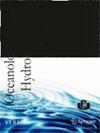Effect of touristic activities on seabirds’ habitat selection on sandy beaches
IF 1
4区 环境科学与生态学
Q4 OCEANOGRAPHY
引用次数: 0
Abstract
Seabirds are biological models for habitat selection studies at different spatial scales. In general, seabirds select areas with a higher availability of prey, but human disturbances can modify their spatial and temporal foraging patterns in urban coastal ecosystems. Here we tested the hypothesis that human activities prevent seabirds foraging on beach sectors that are impacted by urbanization and recreational activities. Seabirds were counted while foraging at the interface between the surf zone and foreshore in three sectors with different levels of urbanization in southeastern Brazil. Physical variables, prey abundance, and human stressors, such as the number of people and dogs, were also measured. The brown booby Sula leucogaster foraged mainly in the least impacted sector, despite the lower abundance of prey and harsher physical conditions. The number of individuals of this species was negatively related to the number of people, indicating a human-induced avoidance behaviour. In turn, the kelp gull Larus dominicanus, a synatropic species, was more abundant in the high impact sector. Our results have implications for the management and conservation of sandy beaches, especially regarding the zoning and selection of priority areas for environmental protection and nature-based ecotourism activities.旅游活动对沙滩海鸟生境选择的影响
海鸟是不同空间尺度下栖息地选择研究的生物学模型。一般来说,海鸟会选择猎物可得性较高的区域,但在城市沿海生态系统中,人为干扰会改变它们的时空觅食模式。在这里,我们测试了人类活动阻止海鸟在受城市化和娱乐活动影响的海滩区域觅食的假设。在巴西东南部城市化程度不同的三个区域,对海鸟在冲浪区和前海岸交界面觅食时进行了计数。研究人员还测量了物理变量、猎物丰度和人类压力源(如人和狗的数量)。褐鲣鸟苏拉主要在受影响最小的区域觅食,尽管猎物的丰度较低,环境也更恶劣。该物种的个体数量与人口数量呈负相关,表明人类诱发的回避行为。反过来,海带鸥Larus dominicanus,一种同温性物种,在高影响区域更为丰富。我们的研究结果对沙滩的管理和保护,特别是对环境保护和基于自然的生态旅游活动的分区和优先区域的选择具有启示意义。
本文章由计算机程序翻译,如有差异,请以英文原文为准。
求助全文
约1分钟内获得全文
求助全文
来源期刊
CiteScore
1.70
自引率
11.10%
发文量
8
审稿时长
>12 weeks
期刊介绍:
Oceanological and Hydrobiological Studies is an international journal published by the Institute of Oceanography, University of Gdańsk in Poland. The journal has 4 issues per year and contains papers on all aspects of the marine environment and hydrobiology. All manuscripts are reviewed by editors and independent experts. Based on the referees'' recommendations, the Editor will make a decision on whether to accept a contribution. All articles are published in English. The journal is open to all matters concerning the water environment, thus providing the readers with a wide spectrum of topics in every issue.

 求助内容:
求助内容: 应助结果提醒方式:
应助结果提醒方式:


